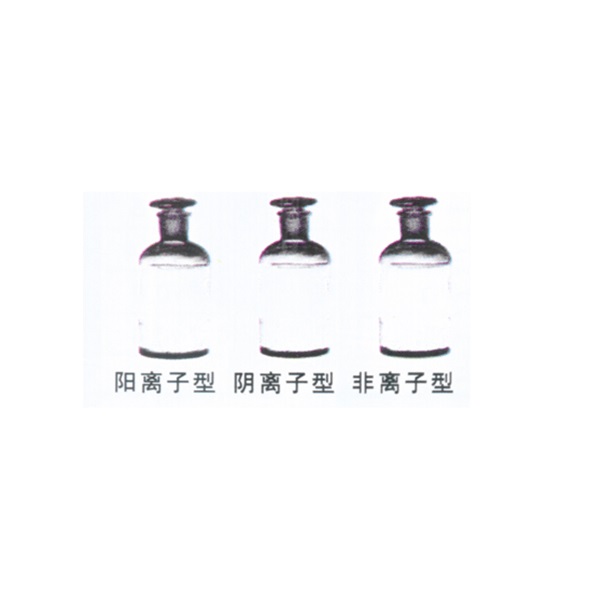Zhejiang NuodunOfficial website
Scan and view immediatelyIntroduction to Polymer Flocculant Products:
Polymer flocculants are water-soluble polymer molecules with negative, neutral, and positive charges on their molecular chains, as well as strong adsorption genes. They can adsorb, bridge, and neutralize colloids or suspended particles in water, disrupt the stability of colloids or particles, promote their flocculation to form larger flocs, and improve or accelerate the solid-liquid separation process. Therefore, they are widely used in the treatment of raw water, wastewater, sludge, and other industries.
Special services
Free selection experiments for users
Polymer flocculant product parameters:
The effect of polymer flocculants varies depending on the state of the treated raw water. The type, size, concentration, and pH of suspended solids in raw water will vary depending on the water quality. Additionally, it should be noted that these conditions are often constantly changing. The stirring conditions can also affect the state of floc formation. Therefore, in order to obtain results, we need to adjust the pH value and stirring conditions. The high molecular weight flocculent aggregates required will vary due to flocculation sedimentation, pressurized air flotation, sludge dewatering, and other treatment purposes.
1. Choose polymer flocculants
(1) The effect of polymer flocculants In order to choose flocculants, users need to consider the above factors and conduct selected experiments that are extremely similar to actual usage conditions.
(2) The experimental methods and steps vary depending on the processing method. But under normal conditions, the raw water that needs to be treated is poured into a measuring cylinder and left to stand for one hour. If most of the sludge has already settled, high molecular weight flocculent aggregates can be used separately for treatment. Start the experiment using representative anionic, non-ionic, and cationic high molecular weight flocculants. Choose a flocculant that can produce stable flocs. Distinguish whether its ions are anions or cations. Then, the selection of flocculant type is determined by comparing weak, medium, and strong anions and cations. After determining the appropriate type of flocculant, select two to three products from that type. Determine the dosage of the product to produce sedimentation rate, transparency, and dehydration effect.
(3) If the use of high molecular weight flocculants alone does not produce the expected effect when combined with other chemicals, the effect can be improved by using them in combination with aluminum sulfate, polyaluminum chloride, and other inorganic flocculants. In addition, depending on the type of sludge, using cationic high molecular weight flocculants instead of inorganic flocculants may also produce better results. When adding these chemicals, inorganic flocculants are usually added and stirred first, and then mixed with polymer flocculants.
2. Dissolve high molecular weight flocculant
(1) The use of automatic highly dispersed dissolver coagulants requires dispersion and careful dissolution to avoid particle adhesion caused by rapid dissolution of the powder surface, resulting in undissolved "fish eyes" inside the particles. Therefore, the usual practice is to use various types of dispersion solvers. If a powder dispersion dissolver is not used, the dissolution operation should be carried out according to the following steps.
(2) Different dispersers dissolve water to half the volume of the dissolution tank. Stir with a stirrer and pour the weighed flocculant calmly and quickly along the edge of the vortex generated by stirring. Mixing flocculants with solvents is crucial before the viscosity of the solution increases. If the viscosity of the solution is too high, agglomeration will occur. Add water to the designated location and adjust to a specific concentration. Continue stirring until the high molecular weight floc aggregates dissolve.
(3) When dispersing and dissolving flocculants, attention should be paid to the dissolution time of the project. The time required to dissolve flocculants may vary depending on the following situations:
The types of high molecular weight flocculent aggregates; The water quality used for dissolving flocculants; Water temperature; Mixing efficiency.
However, most flocculants typically require about an hour of stirring time to fully dissolve the powder. Insufficient mixing or clumping of flocculants may affect their performance, and may even cause sedimentation and blockage of pipelines and pumps. The ideal stirring speed is 200 to 400 revolutions per minute. We recommend not using high-speed mixers that cannot reduce the rotation speed of the motor. Because it may damage the flocculant molecules. For a mixing tank with a volume of 1-2 cubic meters, the ideal motor power for the agitator should be 1 horsepower. The dissolution rate of anionic and non-ionic flocculants is usually dissolved in a solvent with a concentration of 0.1%, while cationic flocculants can be dissolved in a solvent with a concentration of 0.2%. It is also possible to start dissolving at a slightly higher concentration, and then dilute the flocculant mixture immediately before use.






 Zhejiang ICP Preparation No. 2021019126-2
Zhejiang ICP Preparation No. 2021019126-2